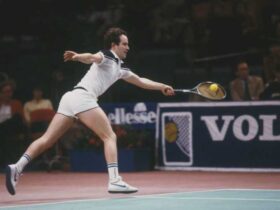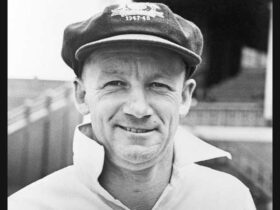Team principal Andrea Stella said the decision to give Norris a 10-second stop-and-go penalty – the severest that can be handed out other than a disqualification – “lacked any specificity and proportion”.
The decision dropped Norris from second place, and a close fight with the leader and eventual winner Max Verstappen, to an eventual 10th place.
And it took McLaren from a position where they would have needed just a couple of points in the the final race of the season in Abu Dhabi next weekend to secure the constructors’ championship, to seeing their lead over Ferrari cut to 21 points. There are a maximum of 44 points available in one weekend.
Waved yellow flags indicate a hazard ahead and drivers must slow down.
Stella said the penalty decision was “a little too simplistic”, adding: “To me it looks like somewhere there must be a book with a lot of dust on the cover that was taken out: ‘Let me see what it says; let me apply this.'”
His remarks allude to a period of turmoil at governing body the FIA in which the race director changed just one race ago, with three grands prix before the end of the season, and a senior steward was fired last week.
Rui Marques made his debut as race director at the Las Vegas Grand Prix, a week before Qatar. He was drafted in at the last minute after the previous race director, Niels Wittich, was fired. No explanation has been given by the FIA for Wittich’s dismissal.
Stella’s criticism of the FIA was shared by Mercedes team principal Toto Wolff, who said of the governing body: “Rationality needs to win and for me it doesn’t look like this at the moment.”
What led to the penalty?
Norris was penalised for ignoring yellow flags that were being waved for a piece of debris on the pit straight – a wing mirror that had come off Alex Albon’s Williams.
The debris sat on the straight for at least three laps, during which period Norris committed his offence, before it was hit by the Sauber of Valtteri Bottas, shattering the mirror and spreading shards of carbon-fibre and glass over the track.
Shortly after the mirror was broken, Lewis Hamilton’s Mercedes and Ferrari’s Carlos Sainz suffered punctures to their front left tyres. And shortly after that, the safety car was deployed to limit the speeds driven and neutralise the race.
Hamilton said he thought his puncture was caused by excessive tyre wear from a car that was lacking front grip on a long first stint.
Ferrari team principal Frederic Vasseur said: “For sure the tyre wear was not helping, but there would not be the puncture if there wasn’t the debris.”
On Sunday after the race, the FIA did not provide an answer to questions as to why the safety car was not deployed to allow marshals to clear the mirror before it was hit by an F1 car.
On Monday, a statement said “normal practice is for the safety car not to be deployed if there is a small amount of debris, and off the racing line”.
It added: “The extensive debris after a car hit the mirror and the punctures that occurred shortly after forced the decision on a safety car.”
McLaren’s Oscar Piastri said: “The right thing to do would have been a virtual safety car or a safety car pretty much straight away.
“I didn’t really know where the mirror was, but after seeing it on the big screen, being basically in the braking zone for Turn One when you’re trying to overtake, I don’t really know what we were going to do until someone hit it. Because I think having it sit there for 30 laps of the race would have been not very smart.”
World champion Max Verstappen said: “I didn’t even know it was a mirror. Of course, I saw the debris, but we have done more races where there has been a bit of debris offline. So I guess it’s a bit of a tough call to make.”
The FIA said Norris’ penalty “was in accordance with the penalty guidelines circulated to the teams on 19 February 2024. A double yellow flag infringement is considered a serious compromise of safety, which is why such offences carry such a severe penalty”.
Stella said “the penalty was deserved” because it was clear that Norris had not slowed down for the yellow flags. Norris admitted he was at fault.
“That leads us to two important requirements that we all, I’m sure, would like to know are applied when it’s about giving a penalty – one is proportion and the second one is specificity,” Stella added. “The application of the penalty lacks both requirements.
“The specificity has to do with what case are we actually considering? Is there an immediate danger for somebody? Is there a crash scene?
“This leads to proportion – the penalty needs to be commensurate, proportionate to the severity of the infringement.
“It’s interesting that the FIA themselves were going on and off with the yellow flag and at some stage it was even removed. Which gives a sense how severe is the situation.
“Lando did not slow down, but the lack of any specificity and proportion is very concerning and is also a factor that could have a decisive impact on the championship quest.”
Stella said the FIA should consider this “very seriously if we want fairness to be part of racing in F1”.
He added: “We expect that this case of applying such a severe penalty in this case will be reviewed by the FIA and there is certainly material for improvement.
“We have expressed that we expect this case to be reviewed but we don’t want to enter in any comment in changes of racing director. We don’t have the elements to judge. We just trust the institution that is there to do this job.”
He emphasised that McLaren had asked for the review to “put the sport in a better place”, adding: “I am thinking about the future of F1, not this event specifically.”







Leave a Reply